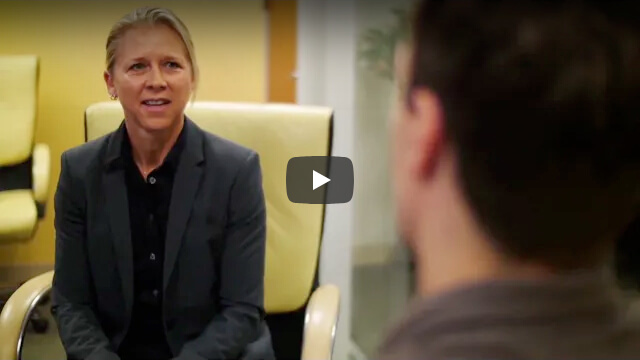Please be advised that the following topic is for informational purposes only and not a legal matter currently handled by our firm. If you need further assistance regarding this particular topic, you can contact your local Bar Association for a referral to an attorney who may be able to address your inquiry in more detail.
The Revised Rule Means It’s More Important Than Ever to Hire a Personal Injury Lawyer
It’s usually best to settle a personal injury claim out of court. In most cases, a talented California personal injury lawyer can help you negotiate a fair and full settlement that covers your damages and allows you to move on with your life.
But this isn’t true 100% of the time. On occasion, there’s a compelling reason to go to court. And when you do, your case could be impacted by a legal concept known as the collateral source rule.
At Sally Morin Personal Injury Lawyers, we have the experience it takes to know when to settle out of court and when to take a case straight to the courtroom. Please read on to learn more about California’s collateral source rule and how it could impact your case.
A Bit of Background: California’s Collateral Source Rule
It all starts with an injury. When someone negligently injures you, the law allows you to start an insurance claim or lawsuit against them to cover your damages.
Here in California, only about 2% to 3% of personal injury cases end with jury trials. Most cases result in settlements that are negotiated between the two parties: on one side, the injured victim and their personal injury lawyer, and on the other side, the insurance company’s representatives and lawyers.
Your case may fall within that small fraction of cases where it’s necessary and worthwhile to go to court. This is where you’ll encounter California’s collateral source rule, which was designed to protect injured people from losing out on injury payments due to tricky legal maneuvering from the other side.
These cases usually center around medical bills, also known as medical damages. In some cases, the collateral source rule has also been used in situations involving uninsured motorist coverage and property damage.
The Original Doctrine of the Collateral Source Rule
First instituted in California in 1854, the collateral source rule applies to civil lawsuits and prohibits a defendant’s attorneys from introducing evidence that the injured party is already receiving compensation for damages from a third party.
In plain language, this means if you sue someone for injuring you, they can’t just say, “I owe you nothing because insurance is covering your costs.” They can’t use your insurance coverage as an excuse to get out of paying you the full amount.
The collateral source rule, in its original form, said information about your medical coverage and health insurance policy couldn’t be introduced by the defense during a trial. That’s because it could prejudice, or negatively influence, the trial and unfairly reduce the amount of an award.
As originally written, the collateral source rule protects injured people. In the 1970 ruling Helfend v. Southern California Rapid Transit District, the California Supreme Court explained the reasoning behind the collateral source rule, saying a defendant, “should not be able to avoid payment of full compensation for the injury inflicted merely because the victim has had the foresight to provide himself with insurance.”
The rule was further reinforced by a 2002 California Court of Appeals decision, Miller v. Ellis, which concluded that it is, “intended to ensure that the right of an injured party to be fully compensated for all his or her damages is protected, even if in some instances it entails that party obtaining double recovery from both the insurer and the wrongdoer.”
The Collateral Source Rule was Radically Revised
California’s collateral source rule has been controversial over the years, but it remains in effect. Tort-reform advocates have claimed the rule allows plaintiffs to unfairly collect more than the true value of their damages.
They point to situations where, for example, a health insurance provider covers $100,000 in a plaintiff’s medical bills, yet the defendant still ends up owing the plaintiff that same $100,000. A plaintiff could pocket the extra money.
These concerns led to a radical revision of the collateral source rule. In 2011, the California Supreme Court delivered a milestone ruling in Howell v. Hamilton Meats and Provisions, Inc. This ruling reinterpreted the legal basis that can be used for awards of medical damages in California.
The Court ruled that in terms of economic damages, an injured plaintiff may recover no more than the amounts actually paid or owed by the plaintiff or his or her private insurer for medical services received. This means your medical bills can be introduced at trial and only the actual amounts paid are relevant.
The Real-World Impact of the Rule Change
Picture what the collateral source rule change means for you, an injured victim, during a trial. Your medical insurance coverage is now entered as evidence for the judge and jury to examine. Also, the courts have placed a firmer boundary on how much money you can receive.
This is an important change because providers typically have agreements with insurance companies to provide medical services at much lower rates than the amounts patients are billed. Your monetary award could depend on what your doctor’s office happened to negotiate with the insurance company!
Out here in the real world, it means injured people sometimes get less than they deserve due to this technicality in the law. People who all have similar injuries can end up with vastly different amounts simply due to variations in insurance coverage.
Additional court decisions have meant that these changes to the collateral source rule also apply to Medicare and Medi-Cal (Sanchez v. Strickland), workers’ compensation (Sanchez v. Brooke), future medical damages (Corenbaum v. Lampkin), and the Affordable Care Act (Cuevas v. Contra Costa County).
How the Collateral Source Rule Could Impact Your Case
The revisions to the collateral source rule mean you could receive a lower award at trial than you’d hoped to receive. In general, there are two main ways this could affect your compensation for injuries.
A Lower Award When You Have Insurance
Since the Court decided that the total amount billed for your treatment can’t be used to determine your award for medical damages, the amount of your award could be substantially smaller if you have health insurance than it might be for an uninsured person.
A Demand for Overcompensation Repayment
In rare cases, the plaintiff ends up overpaying for their medical treatment and an insurance company seeks a refund for the excess compensation. It’s a complicated process, which is why insurance companies rarely pursue it, but it can result in legal action. This means there’s a very slim chance that an individual could be forced to repay the money they’ve already used to pay medical expenses, cover lost wages, or take care of their family.
There are a few exceptions to the collateral source rule. They usually involve medical malpractice claims and/or cases that involve unpaid medical bills. Your personal injury lawyer can provide more explanation about these fine points of the law.
A Personal Injury Lawyer Looks Out for You
If you’re feeling confused or frustrated about California’s collateral source rule, we don’t blame you. It’s all very complicated! That’s why the team at Sally Morin Personal Injury Lawyers is here to help you familiarize yourself with the law and use it to your advantage.
A talented personal injury lawyer keeps the impact of the law in mind as they work to maximize your compensation. We offer a free case evaluation that will help you understand how the collateral source rule might apply. Our goal is to help you de-stress, focus on your health, and stop worrying about all the legal stuff.
We Handle Your Accident Claim So You Can Focus on Your Life
After a personal injury, contact the attorneys at Sally Morin Personal Injury Lawyers. We handle many areas of the law, including bicycle accidents, auto accidents, motorcycle accidents, and many kinds of personal injuries. We believe you should be able to focus on recovering while we handle the legal details. We truly care about the people of California. Contact us today for a free online case evaluation.


